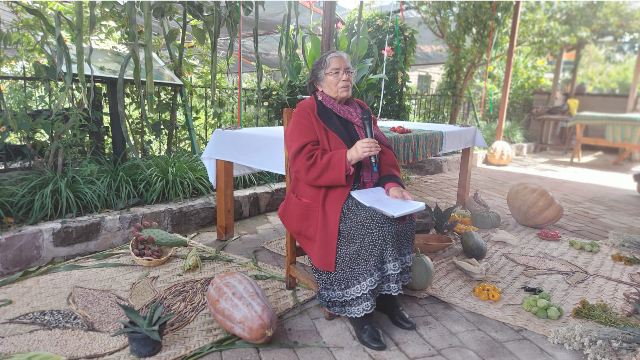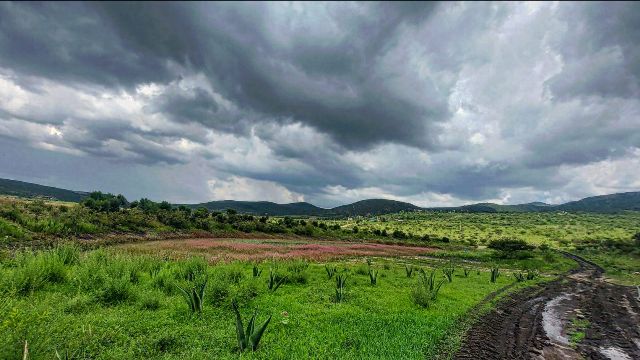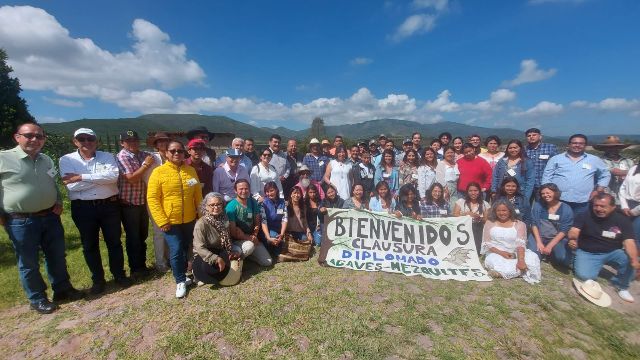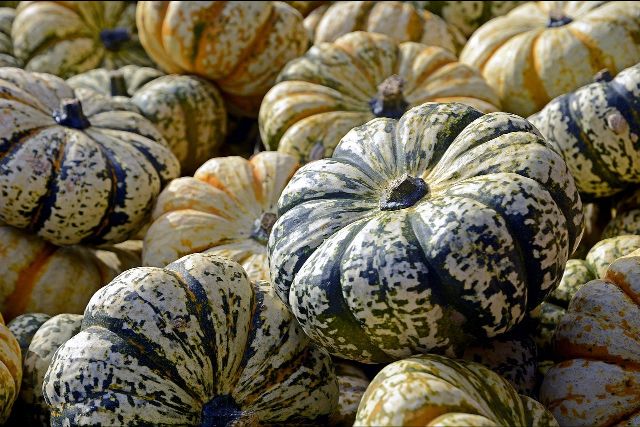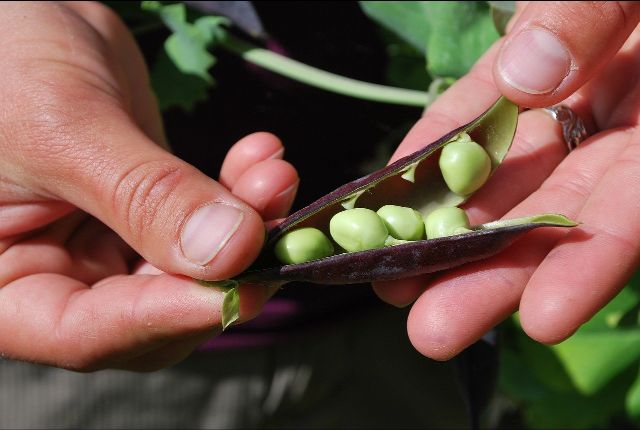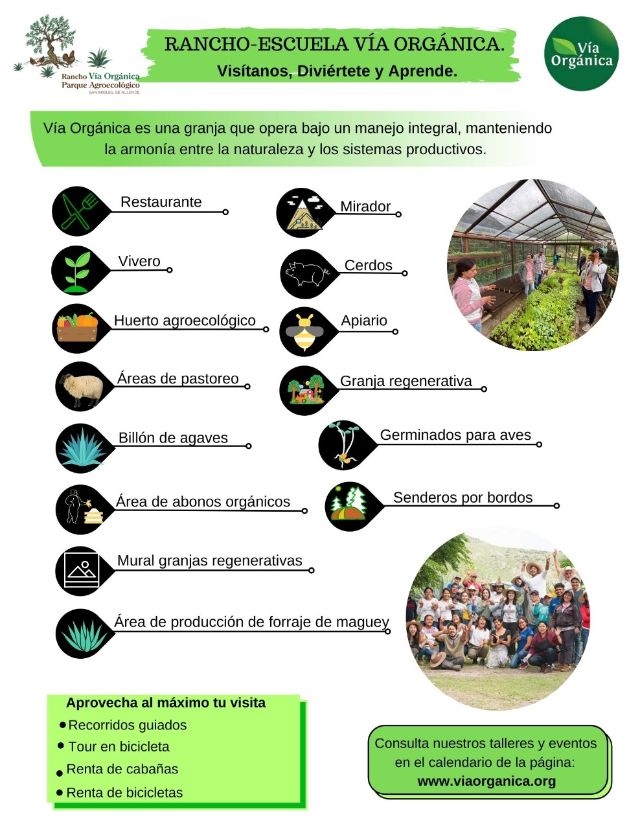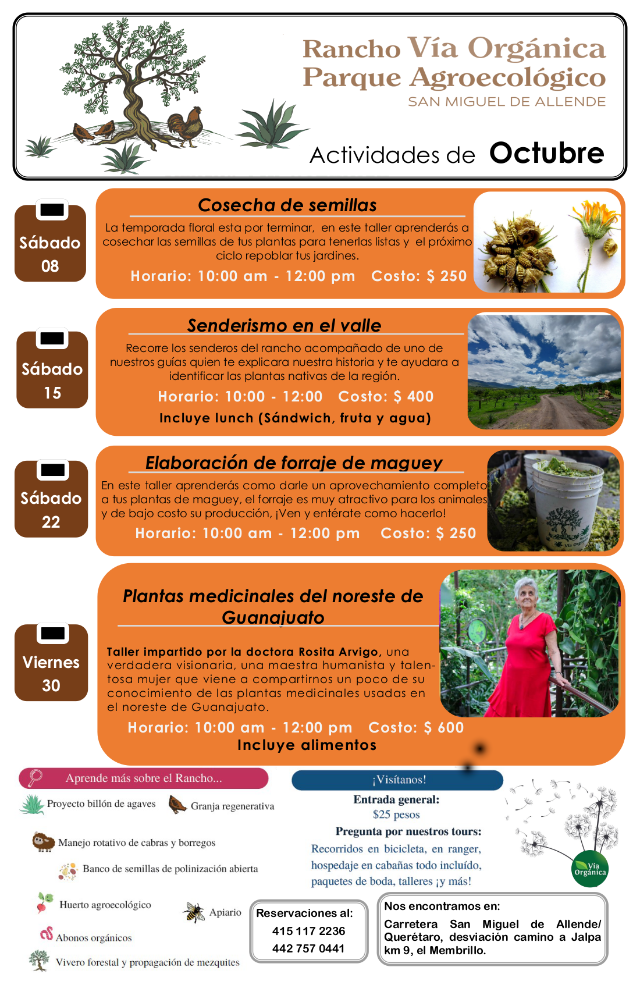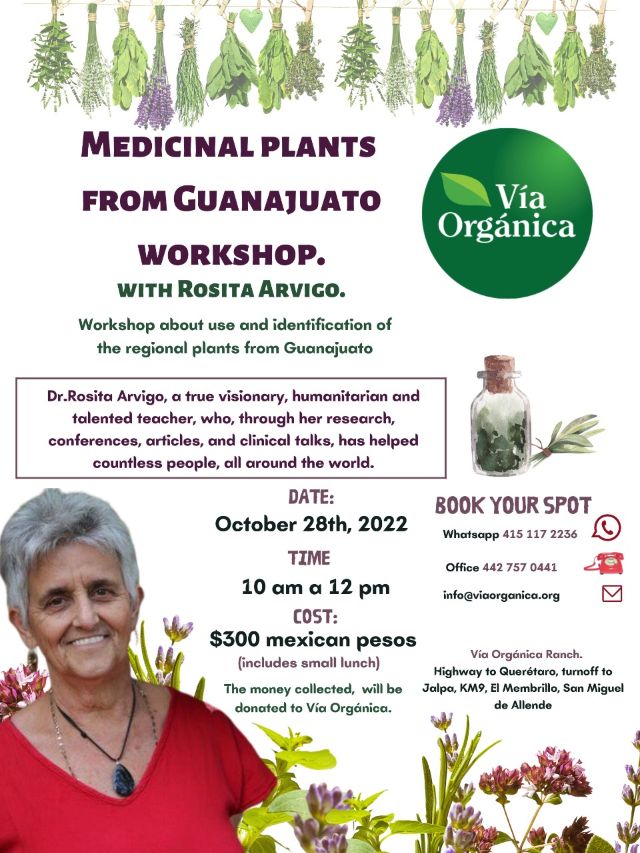For organic regenerative agriculture, fair trade,
social justice, sustainable living and sustainable production
Ranch news
EDUCATIONAL RANCH VIA ORGÁNICA
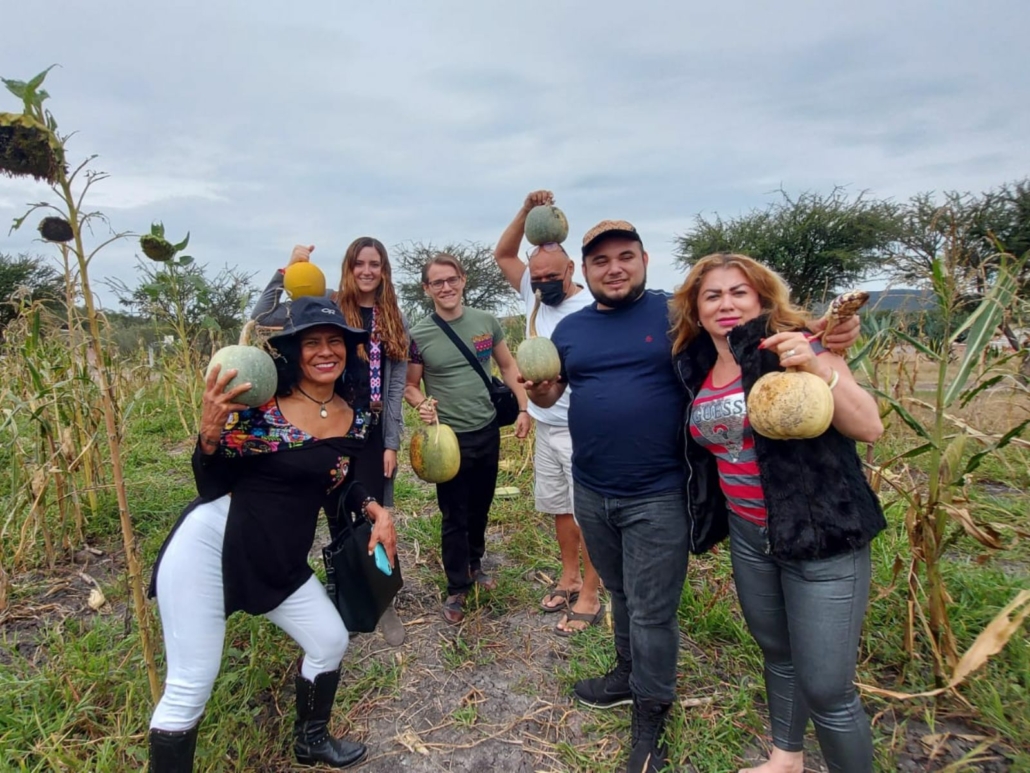
Vía Orgánica ranch was born as a connection space between producers and consumers. Its first space was a store designed to publicize local, wild, artisanal products, coming from the hands of guardians of some natural landscape. It was the producers who inspired this project and continue to motivate it, which is why we dedicate this newsletter to the families of organic producers who take care of the planet and feed the world.
The need we have as consumers to have healthy, seasonal, local, diversified food and above all grown with agroecological techniques; that improve the soil and preserve the species of flora and fauna, is increasing. The educational ranch concentrates and is an example of the different models of food production in semi-arid landscapes, expressing in a creative and beautiful way the work that many farmers carry out. We promote their wisdom and knowledge in activities that we spread through our tours and workshops. We allow to create a connection with what we consume and we offer the possibility of choosing and thinking about our consumption in favor of the solidarity economy, our health and the planet’s health too.
The educational ranch is a space to think about how our food gets to our table and the challenges that imply for each producer who resists and remains in their territory, which is why our relation offers another possibility to resume our food landscape with greater awareness.
Throughout our history, a network of more than 120 seasonal producers has been strengthened, who in small extensions of land, are given the task of maintaining traditional knowledge of food production, processing and conservation and offer their products in various stores, responsible in the region.
Choose your plan!
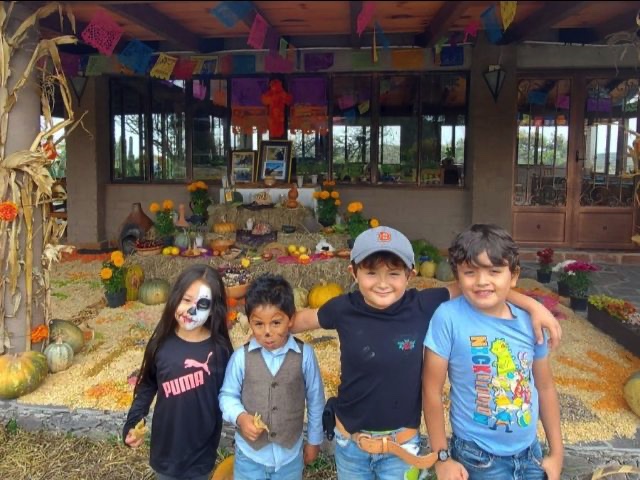
All November visit the ranch from Monday to Sunday and learn all about the Ofrenda that will be displayed with products from the milpa and the semi-arid landscape in tribute to the producers and leaders who have left.
Do not miss the whole month of hiking in the mountains! You can now come and collect your pumpkin to bake with butter, or make a pie.
Book your visit!
Billion Agave Project
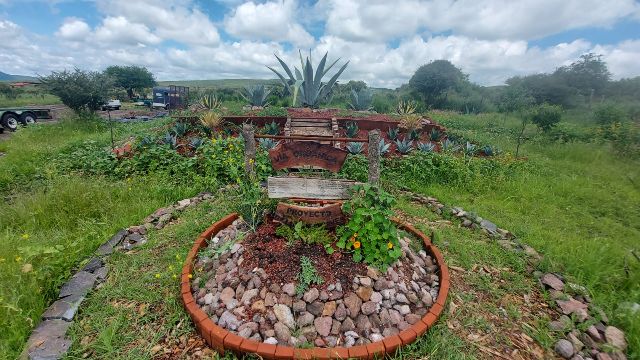
Halfway through autumn, the Billion Agave Project advances with achievements and challenges, integrating more producers, teachers, researchers, environmentalists and decision makers to immerse themselves in this soil regeneration initiative with two dominant species of the semi-desert: the maguey plants and the mesquite trees.
Over two years we’re still learning about the nature of these species; the mesquites propagated by air layering and now distributed in the field while associated with native bushes and trees of the Jalpa Valley, show us their great capacity for adaptation and development.
As for the agaves, we learn about the management of this species, we have adapted tools such as clearings and coas for cleaning pruning and use of the agave leaves. We also explore the use of aggregation pheromones for the monitoring and control of the agave weevil (Scyphophorus acupunctatus), considered the main pest of the species.
Seasonal Crop

Guavas and the first tangerines begin to be harvested. Crops are raised for storage after the rainy season. The honey harvest begins in the region.
Do It Yourself
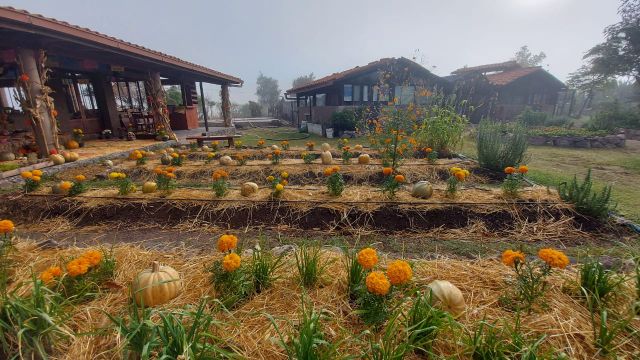
During the month of November, the temperature may begin to drop and you will receive the first frosts in your garden or orchard. Here we share some tips to maintain your plants.
– Water in the evening to prevent your plants from frost burn.
– If you have a blanket to cover your plants at night that can lower the temperature, take advantage of it, or use agrovelo or a sky blanket that allows you to lower the temperature below 0 degrees Celsius.
– Get ready to plant root crops that tolerate low temperatures such as radishes, carrots, turnips, garlic, onions, beets and also leaves such as lettuce, arugula and spinach. They love cool temperatures.
– Your orchard will be less colorful because the cold reduces flowering. But surely you can have a delicious salad harvested from your garden all year round.
Cooking Time
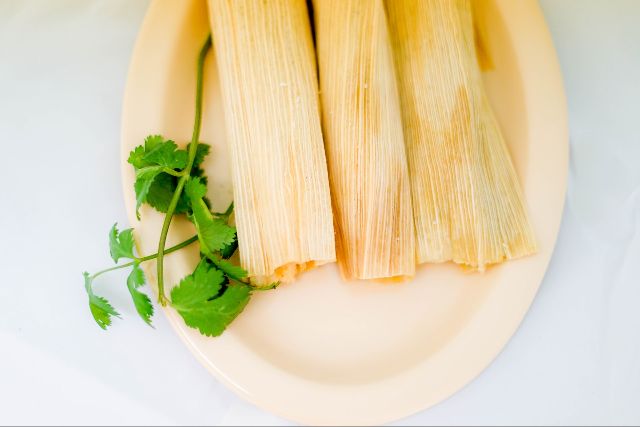
TAMALES DE MUERTO RECIPE
INGREDIENTS:
– 2 kg of black corn dough for tamales
– 1/2 kg of pork lard
– Chicken broth (as needed)
– Corn husks for tamales
FOR THE SAUCE:
– 10 ancho peppers without seeds hydrated in hot water
– 2 large garlic cloves
– 1 small onion
– 1 tablespoon of butter
– salt and pepper to taste
– 1/2 ranchero cheese
PROCEDURE FOR THE SAUCE
Grind the peppers, garlic and onion with a little of the liquid in which the peppers are hydrated, heat the butter and add the sauce. Cook for 15 minutes. Add salt and pepper to taste. The sauce should be thick.
PROCEDURE TO PREPARE THE DOUGH
Cream the pork lard with a little salt until it changes color, then add the dough and a little broth and stir until the dough fluffs and is smooth. Mix vigorously until when you put a small piece of dough into a glass of water it floats.
The dough does not have to be very loose. Once ready, pour half of this dough on a clean and damp cotton cloth, spreading the dough with your hands. Spread using a spoon, half of the sauce and half of the cheese. Roll up with the help of the cloth, cut into slices and put each piece on the corn husks previously hydrated with hot water. Prepare a steamer, arrange the tamales horizontally and cook for one hour.
Enjoy your delicious tamales this Day of the Dead season with a delicious pumpkin atole.
Inspirations
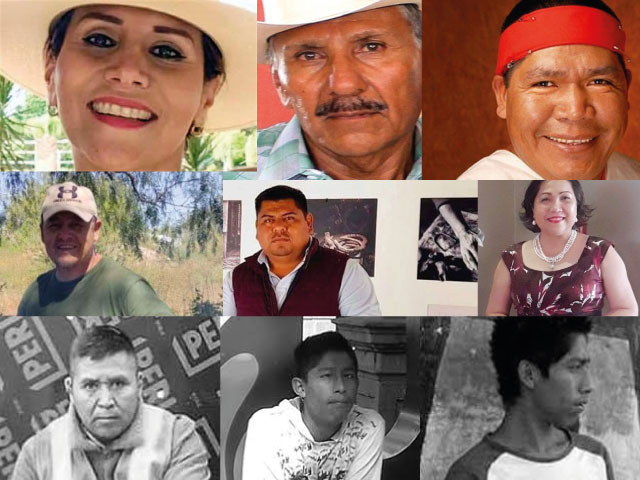
This month in which we honor our deceased, we do not forget and honor those who gave their lives to defend the environment and therefore all of us. This 2022 they have been assassinated: Verónica Patricia Guerrero Vinueza, Francisco Vázquez Domínguez, José Trinidad Baldenegro, Néstor Iván Merino Flores, Patricia Rivera Reyes, Teófilo Barrera Herrera, Marcelo Carrera Reyes, Omar and Jesús Bañuelos Acevedo. We demand justice and an end to violence against defenders in Mexico and around the world.
November Activities
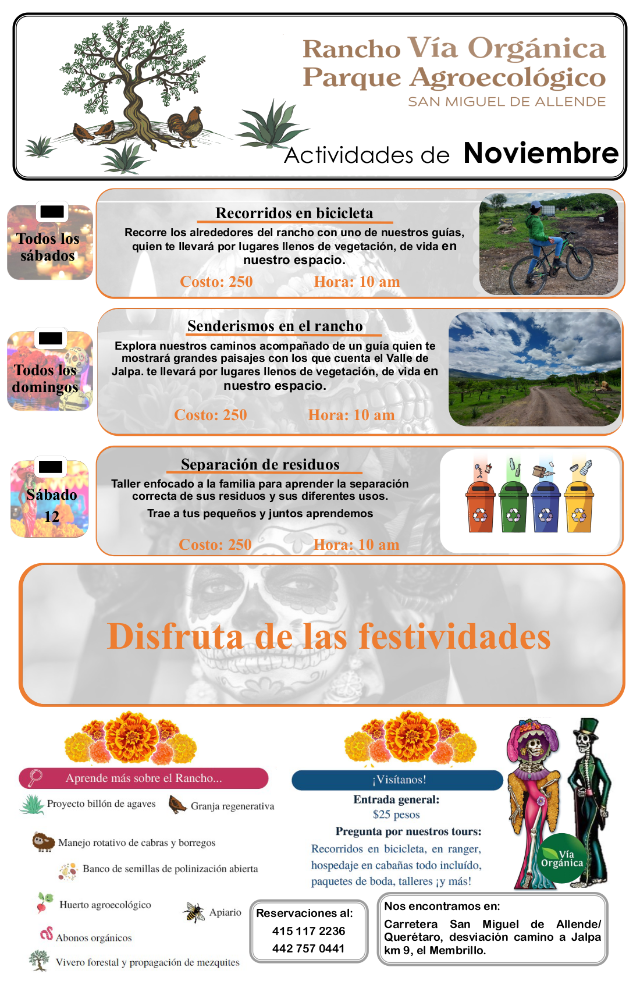
December Activities
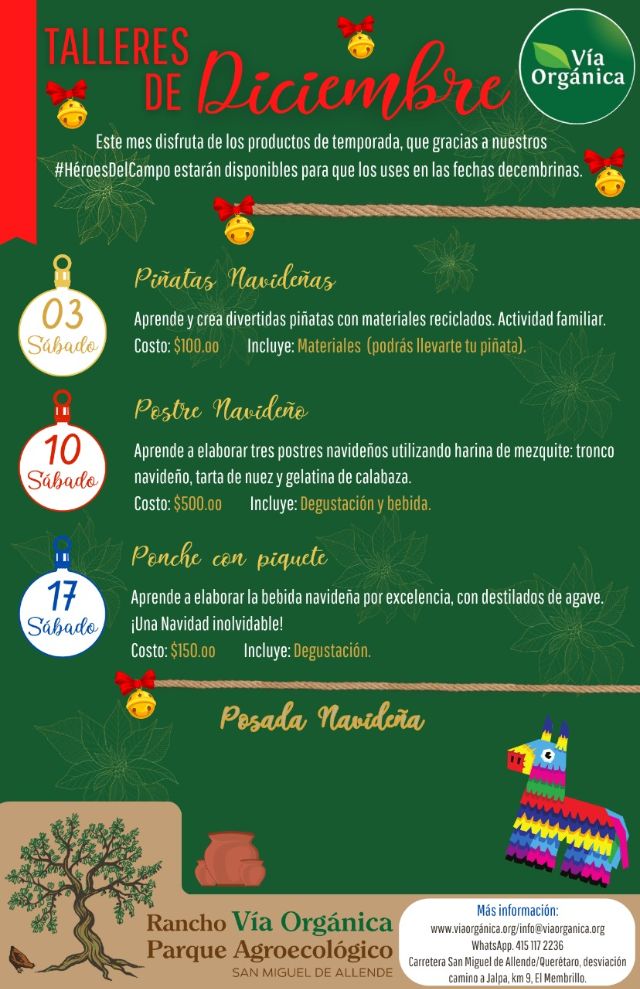
DON’T FORGET TO VISIT US!
Remember that we are open from 8 am to 6 pm
Carretera México/ Querétaro, turnoff to Jalpa, km 9
Agroecological Park Vía Orgánica.
For information on our products, seeds and harvest,
call our store at 442 757 0490.
Every Saturday and Sunday nixtamalized tortilla with Creole and local corn!
Enjoy our sweet and sour kale chips for children and not so children!
FOLLOW US!
 FACEBOOK
FACEBOOK  TWITTER
TWITTER  INSTAGRAM
INSTAGRAM
SHARE THIS NEWSLETTER!
 Share
Share  Tweet
Tweet  Forward
Forward










